Advanced Design of Soft Robots with Artificial Intelligence
- PMID: 38869734
- PMCID: PMC11176285
- DOI: 10.1007/s40820-024-01423-3
Advanced Design of Soft Robots with Artificial Intelligence
Abstract
A comprehensive review focused on the whole systems of the soft robotics with artificial intelligence, which can feel, think, react and interact with humans, is presented.
The design strategies concerning about various aspects of the soft robotics, like component materials, device structures, prepared technologies, integrated method, and potential applications, are summarized.
A broad outlook on the future considerations for the soft robots is proposed.
Keywords: Artificial intelligence; Design tactics; Review and perspective; Soft robotic systems.
Conflict of interest statement
The authors declare no interest conflict. They have no known competing financial interests or personal relationships that could have appeared to influence the work reported in this paper.
Figures







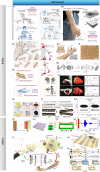




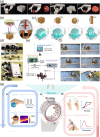


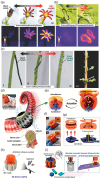
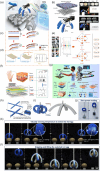
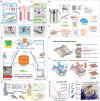
Similar articles
-
Perspective for soft robotics: the field's past and future.Bioinspir Biomim. 2023 Mar 3;18(3). doi: 10.1088/1748-3190/acbb48. Bioinspir Biomim. 2023. PMID: 36764003
-
Bioinspired 3D Printable Soft Vacuum Actuators for Locomotion Robots, Grippers and Artificial Muscles.Soft Robot. 2018 Dec;5(6):685-694. doi: 10.1089/soro.2018.0021. Epub 2018 Jul 24. Soft Robot. 2018. PMID: 30040042
-
Artificial intelligence and robotic surgery: current perspective and future directions.Curr Opin Urol. 2020 Jan;30(1):48-54. doi: 10.1097/MOU.0000000000000692. Curr Opin Urol. 2020. PMID: 31724999 Review.
-
Advanced Artificial Muscle for Flexible Material-Based Reconfigurable Soft Robots.Adv Sci (Weinh). 2019 Sep 4;6(21):1901371. doi: 10.1002/advs.201901371. eCollection 2019 Nov 6. Adv Sci (Weinh). 2019. PMID: 31728286 Free PMC article.
-
Biomedical soft robots: current status and perspective.Biomed Eng Lett. 2020 May 28;10(3):369-385. doi: 10.1007/s13534-020-00157-6. eCollection 2020 Aug. Biomed Eng Lett. 2020. PMID: 32864173 Free PMC article. Review.
Cited by
-
Advancement in Soft Hydrogel Grippers: Comprehensive Insights into Materials, Fabrication Strategies, Grasping Mechanism, and Applications.Biomimetics (Basel). 2024 Sep 27;9(10):585. doi: 10.3390/biomimetics9100585. Biomimetics (Basel). 2024. PMID: 39451793 Free PMC article. Review.
-
Mechanical Properties Analysis of Flexible Memristors for Neuromorphic Computing.Nanomicro Lett. 2025 Jul 17;18(1):2. doi: 10.1007/s40820-025-01825-x. Nanomicro Lett. 2025. PMID: 40676361 Free PMC article. Review.
-
A Tunnel Fire Detection Method Based on an Improved Dempster-Shafer Evidence Theory.Sensors (Basel). 2024 Oct 6;24(19):6455. doi: 10.3390/s24196455. Sensors (Basel). 2024. PMID: 39409495 Free PMC article.
-
Fabrication of Soft Robotics by Additive Manufacturing: From Materials to Applications.Chem Rev. 2025 Aug 27;125(16):7275-7320. doi: 10.1021/acs.chemrev.4c00749. Epub 2025 Aug 11. Chem Rev. 2025. PMID: 40789005 Free PMC article. Review.
-
A Flexible Dual-Mode Photodetector for Human-Machine Collaborative IR Imaging.Nanomicro Lett. 2025 Apr 24;17(1):229. doi: 10.1007/s40820-025-01758-5. Nanomicro Lett. 2025. PMID: 40272611 Free PMC article.
References
-
- M. Lu, J. Yin, Q. Zhu, G. Lin, M. Mou et al., Artificial intelligence in pharmaceutical sciences. Engineering 27, 37–69 (2023). 10.1016/j.eng.2023.01.014
-
- J. Sipola, M. Saunila, J. Ukko, Adopting artificial intelligence in sustainable business. J. Clean. Prod. 426, 139197 (2023). 10.1016/j.jclepro.2023.139197
-
- J. Sourati, J.A. Evans, Accelerating science with human-aware artificial intelligence. Nat. Hum. Behav. 7, 1682–1696 (2023). 10.1038/s41562-023-01648-z - PubMed
-
- X. Bi, L. Lin, Z. Chen, J. Ye, Artificial intelligence for surface-enhanced Raman spectroscopy. Small Methods 8, e2301243 (2024). 10.1002/smtd.202301243 - PubMed
-
- S. Stamenković, N. Jovanović, B. Vasović, M. Cvjetković, Z. Jovanović, Software tools for learning artificial intelligence algorithms. Artif. Intell. Rev. 56, 10297–10326 (2023). 10.1007/s10462-023-10436-0
Publication types
LinkOut - more resources
Full Text Sources
